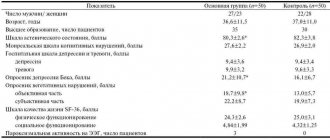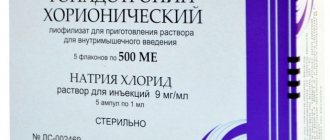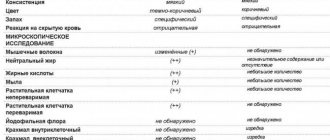Home | About us | Delivery | Advertisers | Login | Registration
Delivery on Sundays and holidays does not work!
- Medicines
- dietary supplementsVitamins
- Categories from A to Z
- Brands from A to Z
- Products from A to Z
- Medical equipment
- beauty
- Child
- Care
- Honey products appointments
- Herbs and herbal teas
- Medical nutrition
- Journey
- Making medicinesStock
Pharmacy online is the best pharmacy in Almaty, delivering medicines to Almaty. An online pharmacy or online pharmacy provides the following types of services: delivery of medicines, medicines to your home. Online pharmacy Almaty or online pharmacy Almaty delivers medicines to your home, as well as home delivery of medicines in Almaty.
my basket
Apteka84.kz is an online pharmacy that offers its customers medicines, medicinal and decorative cosmetics, dietary supplements, vitamins, baby food, intimate products for adults, medical equipment and thousands of other medical and cosmetic products at low prices. All data presented on the Apteka84.kz website is for informational purposes only and is not a substitute for professional medical care. Apteka84.kz strongly recommends that you carefully read the instructions for use contained in each package of medicines and other products. If you currently have any symptoms of the disease, you should seek help from a doctor. You should always tell your doctor or pharmacist about all the medicines you take. If you feel you need further help, please consult your local pharmacist or contact our GP online or by telephone.
© 2022 Pharmacy 84.
BUDESONIDE FOR INFLAMMATORY BOWEL DISEASES
Glucocorticosteroids, due to their immunomodulatory and anti-inflammatory properties, have proven to be highly effective in treating patients with inflammatory bowel diseases. However, due to the risk of side effects, the dose and duration of therapy with systemic glucocorticosteroids must be limited. Currently, the use of local glucocorticosteroids is of great interest, among which budesonide is considered the most promising. This potent drug is readily soluble in water and has low systemic bioavailability, which reduces the risk of side effects associated with corticosteroid use. When used as enemas in patients with proctitis or proctosigmoiditis, the effectiveness of budesonide was higher than placebo and equal to that of enemas with prednisolone or 5-aminosalicylic acid. In the form of enteric-coated tablets, budesonide was more effective than placebo in achieving and maintaining remission in patients with ileocecal Crohn's disease. Although adverse events associated with corticosteroid use are rare, some suppression of the hypothalamic-pituitary-adrenal axis may occur.
Keywords:
Budesonide;
Ulcerative colitis; Crohn's disease; Glucocorticosteroid; Inflammatory bowel disease. Due to its immunomodulatory and anti-inflammatory properties glucocorticos-steroids have proven to be highly effective in patients with inflammatory bowel disease. However, because of the risk of side-effects, the dose and duration of therapy with systemically acting glucocorticosteroids have to be restricted. Recently the use of topicalty acting gluco-coiticosteroids has attracted great interest. Among the various topically acting glucocorticosteroids budesonide has emerged as the most promising. Budesonide is highly potent, is readily water-soluble and has low systemic bioavailability, thus reducing the risk of corticosteroid-related side-effects. When given as enema to patients with proctitis or proctosigmoiditis, the efficacy of budesonide is greater than that of placebo and equal to that of prednisolone or 5-aminosalicylic acid enemas. In an enteric-coated formulation budesonide is more effective than placebo in achieving and maintaining remission in patients with ileocecal Crohn's disease. Although coiti-costeroid-related side-effects are rare, some suppression of the hypothalamic-pituitary-adrenal axis may occur.
CBHW Lamers, MJ Wagtmans, A. van der Sluys Veer, RA van Hozeland, G. Griffioen Department of Gastroenterology-Hepatology, University Hospital Leiden, Netherlands
Introduction
Since the mid-50s, the use of glucocorticosteroids has been a mainstay in the treatment of active inflammatory bowel diseases [1, 2]. However, such treatment may cause serious side effects such as emotional disturbances, Cushing's syndrome, osteoporosis, etc., which prevents the use of glucocorticosteroids for a long time or in high doses. In recent years, active glucocorticosteroids have been obtained that cause fewer systemic side effects [3-5]. Theoretically, several approaches are possible to combine high local efficacy with a low risk of systemic side effects of steroids [3]. First, the search for subtypes of glucocorticosteroid receptors that are separately responsible for different types of effects of these drugs. Unfortunately, this approach does not seem promising, since glucocorticosteroid receptors throughout the human body appear to be uniform, and therefore the same type of receptor can mediate both therapeutic and adverse reactions. Another approach is to use prednisolone preparations with larger molecules, which will achieve a slower release of prednisolone. Prednisolone metasulfobenzoate is the best known representative of the large prednisolone molecules. When administered rectally, this drug reaches higher concentrations in rectal tissue than rapidly absorbed systemic steroids. However, the compound can induce sulfa-like side effects, and when used as a sponge, the hypothalamic-pituitary-adrenal system is inhibited. The third, most promising approach is to prescribe glucocorticosteroid derivatives that have a high potential for local action, are rapidly absorbed and inactivated through biotransformation by liver enzymes. Some of these drugs with local activity and low systemic bioavailability have been used for several years to treat asthma and rhinitis. In fact, the conditions for local enema treatment of distal ulcerative colitis are even better than in the case of asthma or rhinitis, since after absorption almost the entire amount of the drug goes directly to the liver through the portal circulation, whereas inhaled drugs must first pass through the heart and only one a third passes directly through the liver. Several drugs suitable for use as enemas are already available or are being tested, including budesonide, beclomethasone dipropionate, tixocortol pivalate, and fluticasone propionate [3–5]. Budesonide is the most thoroughly studied and perhaps the most promising of these. It has proven effective not only when used as an enema for distal ulcerative colitis, but also as a slow-release oral drug for ileocecal Crohn's disease [6, 7]. Budesonide has a high affinity for receptors, indicating high internal activity, 2.5 times higher than that of beclomethasone dipropionate, 200 times higher than that of thixocortol pivalate and 15 times higher than that of prednisolone. Moreover, budesonide is characterized by 100 times higher solubility in water than beclomethasone dipropionate and rluticasone propionate, facilitating its dissolution and entry into the intestine. Budesonide is effectively absorbed after rectal administration, penetrates the intestinal wall for several hours to provide anti-inflammatory effects and then transported through the portal circulation to the liver, where it is rapidly biotransformed by oxidizing enzymes into metabolites with at least 100 times less intrinsic glucocorticosteroid activity than the parent compound [3]. However, from a pharmacological point of view, there are discrete differences between topical glucocorticosteroids. For example, one of metabolites beclomethasone dipropionate retains obvious glucocorticosteroid activity, and thixocortol pivalate is rapidly metabolized through extrahepatic mechanisms, which can lead to partial inactivation in the intestinal wall, while fluticasone propionate is poorly absorbed [3].
Clinical studies using budesonide as an enema
Since budesonide is the most studied topical steroid, this section will focus mainly on it. The optimal dose of budesonide for distal ulcerative colitis is 2 mg per 100 ml of enema [8]. Several studies have compared budesonide enemas administered daily in the evening with enemas containing various prednisolone preparations and hydrocortisone sponges [5, 8–12]. Symptoms, endoscopy and rectal biopsy data, as well as side effects were usually recorded after 2 and 4 weeks of treatment. Although the number of patients included in most studies is relatively small, the results are clear. Budesonide enemas were at least as effective as prednisone enemas in terms of symptoms, endoscopy, and rectal biopsy, whereas plasma cortisol levels were clearly reduced with prednisone and to a lesser extent with budesonide. Significant adverse events were rare with budesonide enemas, and only 2% of patients had to discontinue participation in the clinical trial. Although symptoms, endoscopy, and rectal biopsy results improved significantly with both prednisone and budesonide, a relatively large percentage of patients were not completely cured after 4 weeks, suggesting that longer treatment may be necessary in some patients. This issue has been examined in only a few studies, and it was found that an additional 4 weeks of budesonide enema therapy resulted in further improvement even in patients who responded poorly to prednisone treatment [10–12]. V. Porro et al. [12] reported that an additional 4 weeks of budesonide treatment in 37 patients who had not been cured during the previous 4 weeks resulted in symptomatic remission in 65% and mucosal healing or significant improvement by endoscopy in 47%. Budesonide enemas were also compared with retention enemas containing 1 or 4 g of 5-aminosalicylic acid (5-ASA) [13, 14]. In both studies, enemas containing 2 mg budesonide were equivalent to 5-ASA enemas in terms of symptoms, endoscopy, biopsy, and adverse events. Pilot studies have also assessed the effectiveness of budesonide enemas in treatment-resistant distal ulcerative colitis and Crohn's disease involving the colon [5]. In both studies, treatment with budesonide resulted in remission or improvement in approximately 75% of patients. In an open study by A. Belluzzi et al. [15] treated 10 patients with inflammation of the abdominal pouch with budesonide suppositories (0.5 mg) 3 times a day for 4 weeks. All 10 patients experienced clinical and endoscopic improvement, but 6 developed a relapse 4 weeks after stopping treatment.
Oral budesonide studies
Because the risk of side effects is higher with the use of oral corticosteroids than with enemas, studies of the effectiveness and safety of oral budesonide in patients with inflammatory bowel disease are of great interest. One of the main problems associated with oral administration of topical drugs is that it is difficult to achieve maximum availability of the compound at the site of inflammation. This is especially difficult to achieve in Crohn's disease, where the inflammatory process can occur in any part of the gastrointestinal tract, often occurs behind the mucosa and can lead to small intestinal resections that interfere with intestinal patency and drug placement. To achieve maximum availability of budesonide in the ileum and proximal colon, a special coating was used to prevent absorption in the upper gastrointestinal tract. Enteric-coated budesonide has been used to treat patients with Crohn's disease affecting the ileocecal region [6,7]. In a placebo-controlled dose-finding trial, the optimal dose of budesonide was found to be 9 mg/day. After 8 weeks of treatment, clinical remission was achieved in 51% of patients receiving 9 mg budesonide per day, 43% receiving 15 mg/day, 33% receiving 3 mg/day and 20% receiving placebo [6]. Adverse events associated with corticosteroid use were rare, but plasma cortisol levels were significantly reduced in patients receiving 9 mg budesonide per day [6]. Another study compared budesonide at a dose of 9 mg/day with prednisolone at a dose of 40 mg/day for 2 weeks, after which the dose was gradually reduced to 5 mg/day during the last week [7]. After 10 weeks, 53% of patients receiving budesonide were in remission compared with 66% in the prednisone group. As expected, plasma cortisol concentrations were less reduced and corticosteroid-related adverse events were observed less frequently in patients receiving budesonide. Subsequent work compared budesonide 3 and 6 mg with placebo in patients who had achieved clinical remission in a previous trial [16]. Oral budesonide 6 mg/day was significantly better than placebo in maintaining remission, while adverse events were rare [16]. Thus, oral budesonide is more effective than placebo in achieving and maintaining remission in patients with ileocecal Crohn's disease. However, budesonide is not a panacea for patients with inflammatory bowel disease, since remission was not achieved in almost half of the patients with ileocecal Crohn's disease included in the studies.
Literature:
1 . Peppercorn MA. Advances in drug therapy for inflammatory bowel disease. Ann Intern Med 1990; 12:50-60. 2. Landi B, Anh TN, Cortot A, et al. Endoscopic monitoring of Crohn's disease treatment: a prospective, randomized clinical trial. Gastroenterology 1992; 1082:1647-53. 3. Brattsand R. Overview of new glucocorticoid preparations for inflammatory bowel disease. Can J Gastroenterol 1990;4:407-14. 4. Mulder CJJ, Tytgat GNJ. Topical corticosteroids in inflammatory bowel disease. Aliment Pharmacol ther 1993;7:125-30. 5. Lamers CBHW. Future of topical steroid substances. Eur J Gastroenterol Hepatol 1994;6:121-3. 6. Greenberg GR, Feagan BG, Martin F, et al. Oral budesonide ror active Crohn's disease. N Engi J Med 1994;331:836-41. 7. Rutgeerts P, Lofberg R, Malchow H. et al. A comparison of budesonide with prednisolone for active Crohn's disease. N Engi J Med 1994;331:842-5. 8. Danish Budesonide Study Group. Budesonide Study Group. Budesonide enema in Distal ulcerative colitis: a randomized dose-response trial with prednisolone enema as positive control. Scand J Gastroenterol 1991,•26:1225-30. 9. Daninelsson A, Hellers G, Lyrenas E, et al. A controlled randomized trial of budesonide versus prednisolone retention enemas in active distal ulcerative colitis. Scand J Gastroenterol 1987;22:987-92. 10. Lofberg R, Ostergaard-Thomson 0, Langholz E, et al. Budesonide versus prednisolone enema in active distal ulcerative colitis. A eight comparative week study. Gut 1993;34 (suppi 1): T62. eleven . Thomson 0, Anderssen T, Langholz E, et at. Lack of adrenal gland suppression with budesonide enema treatment in active distal ulcerative colitis. A prednisotone controlled eight week study. Gut 1993;34:S27. 12. Bianchi Porro G, Prantera C, Campieri M, et al. Comparative trial of budesonide and methylprednisolone enemas in active distal ulcerative colitis. Eur J Gastroenterol Hepatol 1994:6:125-30. 13. Lamers CBHW, Meijer JL, Engels L, et al. Comparative study of the topically acting glu-cocorticosteroid budesonide and 5-aminosali-cylic acid enema therapy of proctitis and proctosigmoidtis. Gastroenterology 1991;100:A223. 14. Lemann M, Rutgeers P, Van Heuverzwijn R, et al. Comparison of budesonide enema and 5-ASA enema in the treatment of active distal ulcerative colitis. Hell J Gastroenterol 1992;59(suppl):A776. 15. Belluzzi A, Campieri M, Miglioli M, et al. Evaluation of pntogistic pattern in pouchitis budesonide suppositories. Gastroenterology 1992;102:A593. 16. Lofberg R, Rutgeerts P, Malchow H, et al. Budesonide CVR for maintenance of remission in ileocecal Crohns' disease. A European multicenter placebo controlled trial for 12 months. Gastroenterology 1994;106:A722. Reprinted from the Netherlands Journal of Medicine 1996;48:60-3 by permission of the chief editor.




